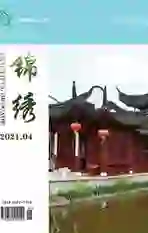论美学视角下《诗经》中植物意象的翻译
2021-01-28侯汶利李陈鹏
侯汶利 李陈鹏
Introduction
As one of the oldest poetry collections in the world, The Book of Songs contains high aesthetic value in tone, sentence and emotion. And image is an artistic image created by objective objects through the unique emotional activities of the creative subject and it is an important category in the study of Chinese poetry and Western literature. The image of China lays great emphasis on the "void", transcending the limitations of time and space, while the West pays more attention to the "form" of image, and people selectively add their thoughts and emotions to the external world in terms of natural objects.
Translation is a communication between different cultures where the original text, the original author and the translator are closely linked. And translation aesthetics is a combination of aesthetic theory and translation theory. In fact, translation is an aesthetic operation process of language application, which focuses on the beauty of language.
The purpose of this paper is to verify the effective application of translation aesthetics in the English version of The Book of Songs, and to further illustrate the feasibility and guiding position of translation aesthetics in the translation of Chinese traditional classic works.
1.The Translation of Plant Images in The Book of Songs from the Perspective of Aesthetics
The Book of Songs uses plants to describe women is common in GuoFeng.
For example, in the poem ”Lady Jiang”(《鄭风·有女同车》):
“ A lady in the cab with me,
Looks like a flower from a hedge-tree.(有女同车,颜如舜华)” (Xu Yuanchong, 1993)
We can see that the poet made compliments on lady Jiang with beautiful flower of hedge-tree.
Also in another poem:
“Plum trees of the mountain,
Peach blossoms of the plain
Wither? Wither?
I am drunk with the pain.”
The image of the plant can trigger the nostalgia. The heroine in the poem looks at the sorbs of the mountain. She is eager to see the gentleman she misses so much. She waits so eagerly that she almost feels heartbreak.
In The Book of Songs, when plants are in connection with people, they are generally more beautiful. Among several major English translations, this article will choose the three most popular versions of Legge, Wang Rongpei and Xu Yuanchong for evaluation.
For example, in "The Newly-Wed(《周南·桃夭》)", there have “桃之夭夭,灼灼其华”“桃之夭夭,有蕡其实"“桃之夭夭,其叶蓁蓁" . The peach blossom, its unusually delicate, and leafy indicates he woman has a beautiful body and has many blessings. As for "逃之夭夭", Legge translated it to "The peach tree is young and elegant", Wang Rongpei translated it to "The peach tree stands wayside", Xu Yuanchong translated it to "The peach tree beams so red". The three major versions are in the extreme to highlight the vitality of the peach tree, but Xu Yuanchong's version is more beautiful with color, giving people a sense of red forest. “灼灼其华”“有蕡其实”“其叶蓁秦" is translated as "Brilliant are its flowers\ Abundant will be its fruit\ Luxuriant are its leaves" by Legge; "With blossoms glowing pink\ With Fruit hanging rife\ With leaves thick and dense" by Wang Rongpei; and "How brilliant are its flowers\ How plentiful its fruit\ Its leaves are lush and green" by Xu Yuanchong. The three major versions are translated from the aesthetics perspective of flowers, fruits and leaves. Both the original meaning and the extended meaning are fully reflected.
In《卫风·硕人》, there is “手如柔荑”“齿如瓠犀" , and here use”柔荑、瓠犀” to describe Mrs. Jiang's fine jade fingers and white teeth. Legge translated it as "Her hands are like the blades of the young white-grass.\ Her teeth were like melon seeds"; Wang Rongpei translated it as "Her hands are small. her fingers slim.\ Her teeth like pearls do gleam"; Xu Yuanchong translated it as "Like lard congealed her skin is tender, Her fingers like soft blades of reed. \ Her teeth like rows of melon-seed". On the parable of the “柔荑”, the translation of Legge is a tender white grass, Wang did not translate it, Xu translated it as a thatched bud. Obviously, the translation is more vivid and relevant than the non-translation: as for the syntax of its translation, Legge is still a narrative poetry, and Xu has used the syntax of adverbial preposition which is a little better in the rhythm.
Thus the aesthetics in the translation of plant image can be clearly noticed from above.
In conclusion, this thesis focused on studying the aesthetic translation of the plant images in The Book of Songs and contributed to the detailed analysis of plant images in aesthetics translation and their application in Chinese traditional classic work The Book of Songs. Whats more, this thesis can serve as a reference for future scholars to employ the method of in-depth translation based on the reader's acceptance level and expectation horizon to translate the appropriate version.
Works Cited
Arthur, Waley. The Book of Songs. London: George Allen&Unwin Ltd., Museum Street. 1937. Print.
James, Legge. Translation Version of Book of Poetry by James Legge. Zhenzhou: Zhenzhou Ancient Books Publishing House, 2016. Print.
陳植锷,《诗歌意象论》。北京:中国社会科学出版社,1992年。
刘宓庆,《翻译美学导论(第二版)》。北京:中国对外翻译出版有限公司,2012年。
许渊冲,《诗经:英汉对照/许渊冲译》。北京:中国对外翻译出版有限公司,2009年。
